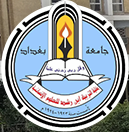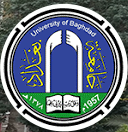Abstract
Desertification is one of the phenomena that threaten the ecological system، otherwise economic and social. This study aims to assess and control desertification in Al-Qadisiyah Governorate through the use of remote sensing techniques and geographic information systems.Vegetation Index (NDVI) and Crust Index (CI) were used، which were applied from both (OII) and Landsat (ETM) satellite images during the years 2013 and 2020 . The results showed that the total area of vegetation cover in 2013 was 2902 square kilometers . With a percentage of 32.30% of the total area، which made it classified in that year within the medium desertification? However، this percentage did not remain the same، but decreased significantly in 2020. The vegetation cover was only 17.43%. That is، the area of vegetation decline reached (373) km، which made it classified as high desertification.The study also showed; the sand area in 2013 was classified within the low sand drift in most of the study districts. With the exception of the district of Hamza، in which sand erosion is classified as high، meaning high desertification. Be the sand erosion more and more expansive in 2020، Where we find that most areas of the governorate have recorded moderate desertification، as is the case in Al-Diwaniyah and Afak districts، while Al-Shamiya district recorded high desertification.
Article Type
Article
First Page
375
Last Page
387
Publication Date
9-15-2023
Creative Commons License

This work is licensed under a Creative Commons Attribution 4.0 International License.
Recommended Citation
Khaled, Abbas Hashem
(2023)
"Using Remote Sensing and Geographic Information Systems to Detect Desertified Agricultural Lands in Al-Qadisiyah Governorate,"
Alustath Journal for Human and Social Sciences: Vol. 62:
Iss.
3, Article 22.
DOI: 10.36473/ujhss.v62i3.2031
Available at:
https://alustath.researchcommons.org/journal/vol62/iss3/22










